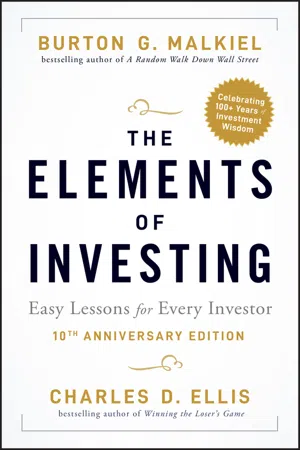Save. The amount of capital you start with is not nearly as important as organizing your life to save regularly and to start as early as possible. As the sign in one bank read:
Little by little you can safely stock up a small reserve here, but not until you start.
The fast way to affluence is simple: Reduce your expenses well below your income—and Shazam!—you are affluent because your income exceeds your outgo. You have “more”—more than enough. It makes no difference whether you are a recent college graduate or a multimillionaire. We've all heard stories of the schoolteacher who lived modestly, enjoyed life, and left an estate worth over $1 million—real affluence after a life of careful spending. And we know one important truth: She was a saver.
But it can also go the other way. A man with an annual income of more than $10 million—true story—kept running out of money, so he kept going back to the trustees of his family's huge trusts for more. Why? Because he had such an expensive lifestyle—private plane, several large homes, frequent purchases of paintings, lavish entertaining, and on and on. And this man was miserably unhappy.
In David Copperfield, Charles Dickens's character Wilkins Micawber pronounced a now‐famous law:
Saving is good for us—for two reasons. One reason for saving is to prevent having serious regrets later on. As the poet John Greenleaf Whittier wrote: “Of all sad words of tongue and pen, the saddest are ‘It might have been.’”* “I should have” and “I wish I had” are two more of history's saddest sentences.
Another reason for saving is quite positive: Most of us enjoy the extra comfort and the feeling of accomplishment that comes with both the process of saving and with the results—having more freedom of choice both now and in the future. Sensible saving is a lot like maintaining good health. Bolster the process of saving through good habits and the results can generate positive feelings.
No regrets in the future is important, or will be, to all of us. No regrets in the present is important, too. Being a sensible saver is good for you, but deprivation is not. So don't try to save too much. You're looking for ways to save that you can use over and over again by making these new ways your new good habits.†
The real purpose of saving is to empower you to keep your priorities—not to make you sacrifice. Your goal in saving is not to “squeeze orange juice from a turnip” or to make you feel deprived. Not at all! Your goal is to enable you to feel better and better about your life and the way you are living it by making your own best‐for‐you choices about when to spend. Savings can give you an opportunity to take advantage of attractive future spending opportunities that are important to you. Saving also puts you on the road to a secure retirement, buying a new home, or sending your children to college. Think of saving as a way to get you more of what you really want, need, and enjoy. Let saving be your helpful friend.
FIRST DO NO HARM
The first step in saving is to stop dis saving—spending more than you earn, especially by running up balances on your credit cards. There are few, if any, absolute rules in saving and investing, but here's ours: Never, never, never take on credit card debt. This rule comes as close as any to being an inviolable commandment. Scott Adams, the creator of the Dilbert comic strip, calls credit cards “the crack cocaine of the financial world. They start out as a no‐fee way to get instant gratification, but the next thing you know, you're freebasing shoes at Nordstrom.”
Credit card debt is great—but not for you (or any other individual). Credit card debt is great for the lenders, and only the lenders. Credit cards are a wonderful convenience, but for every good thing there are limits. The limit on credit cards is not your announced “credit limit.” The only sensible limit on credit card debt is zero.
Credit card debt is seductive. It's all too easy to ease onto the slippery slope—and slide down into overwhelming debts. You never—well, almost never—get asked to pay off your debt. The bank will “graciously” allow you to make low monthly payments. Easy. Far too easy! Your obligations continue to accumulate and accumulate until you get The Letter, saying you have borrowed too much, your interest rate is being increased, and you are required to switch, somehow, from money going to you to money going from you to the bank. You are not just in debt, you are in trouble. If you don't do what the bank now says you must do, legal action will be taken. Be advised! Never, never, never use credit card debt.
